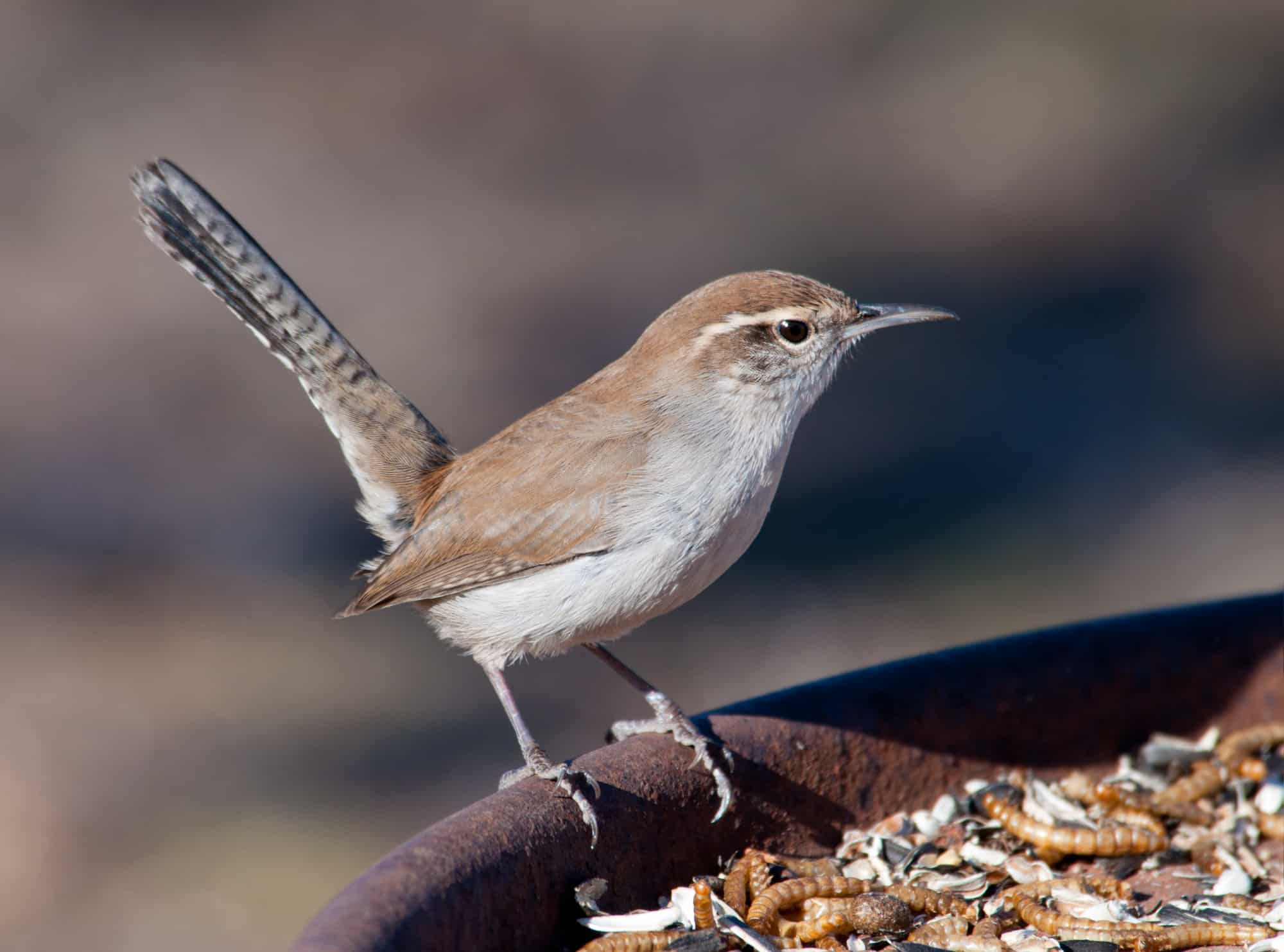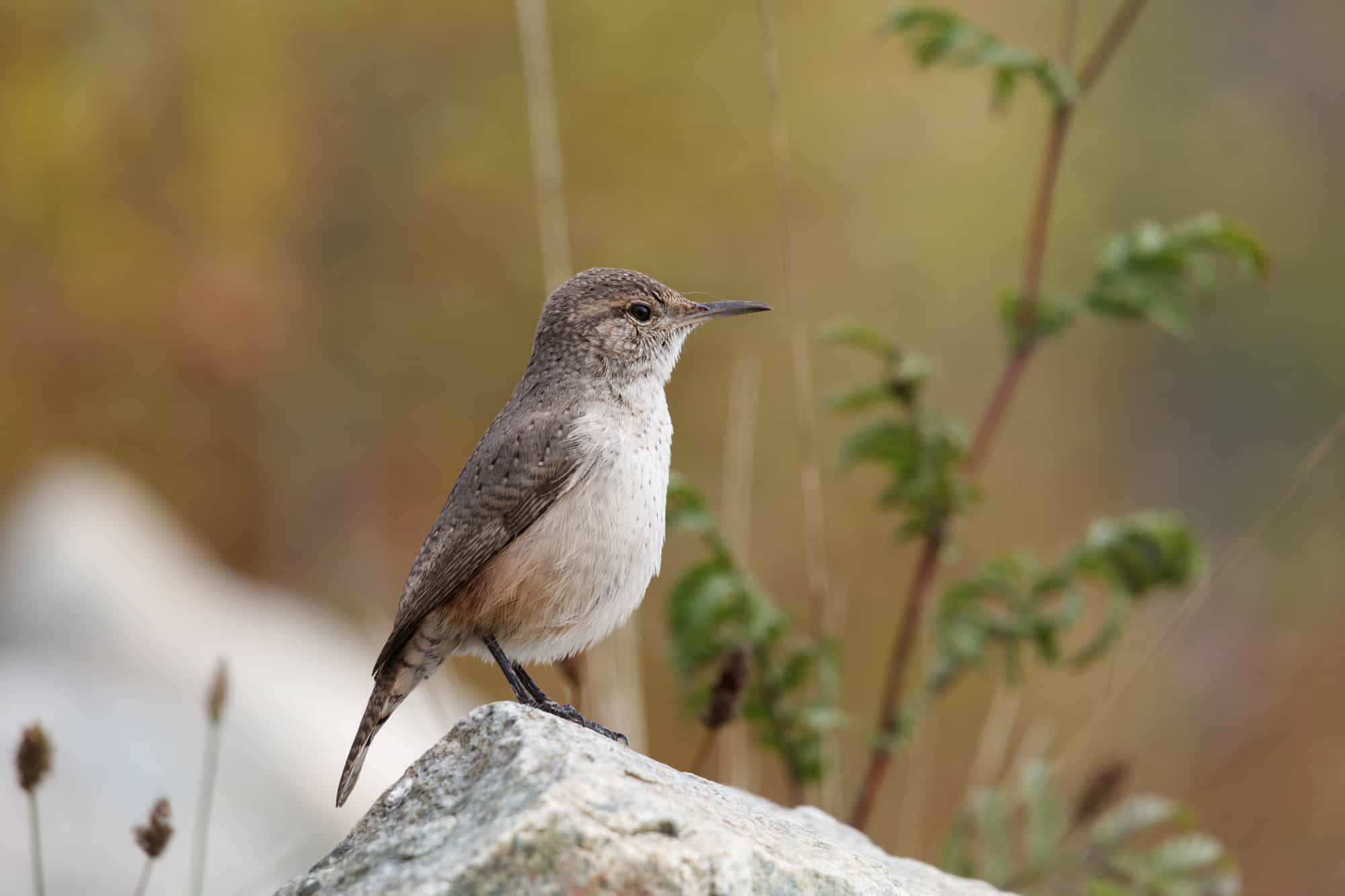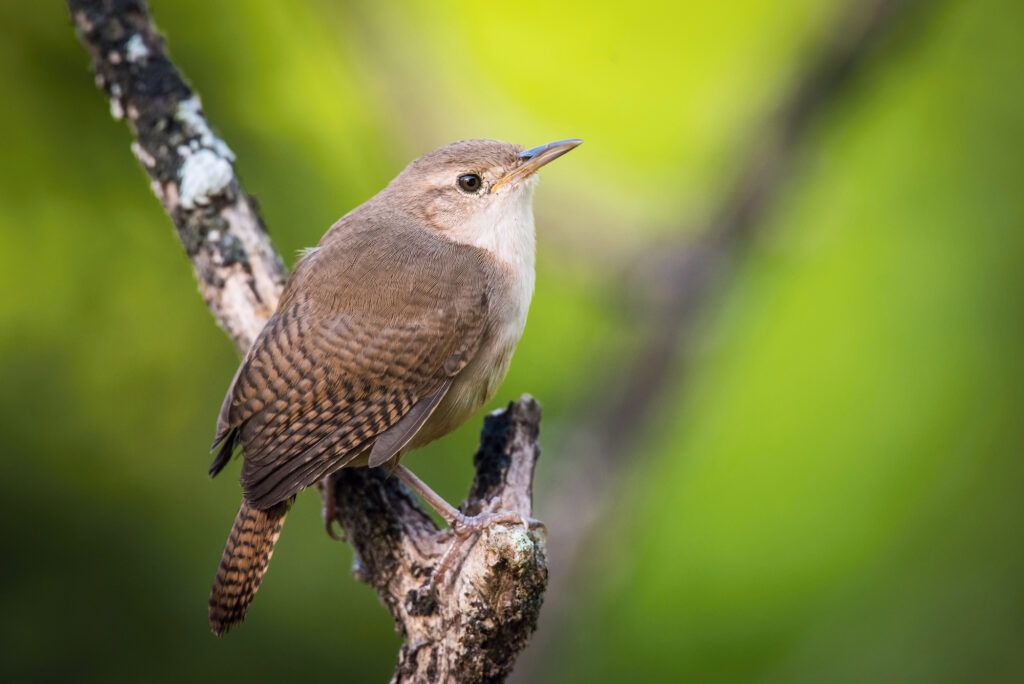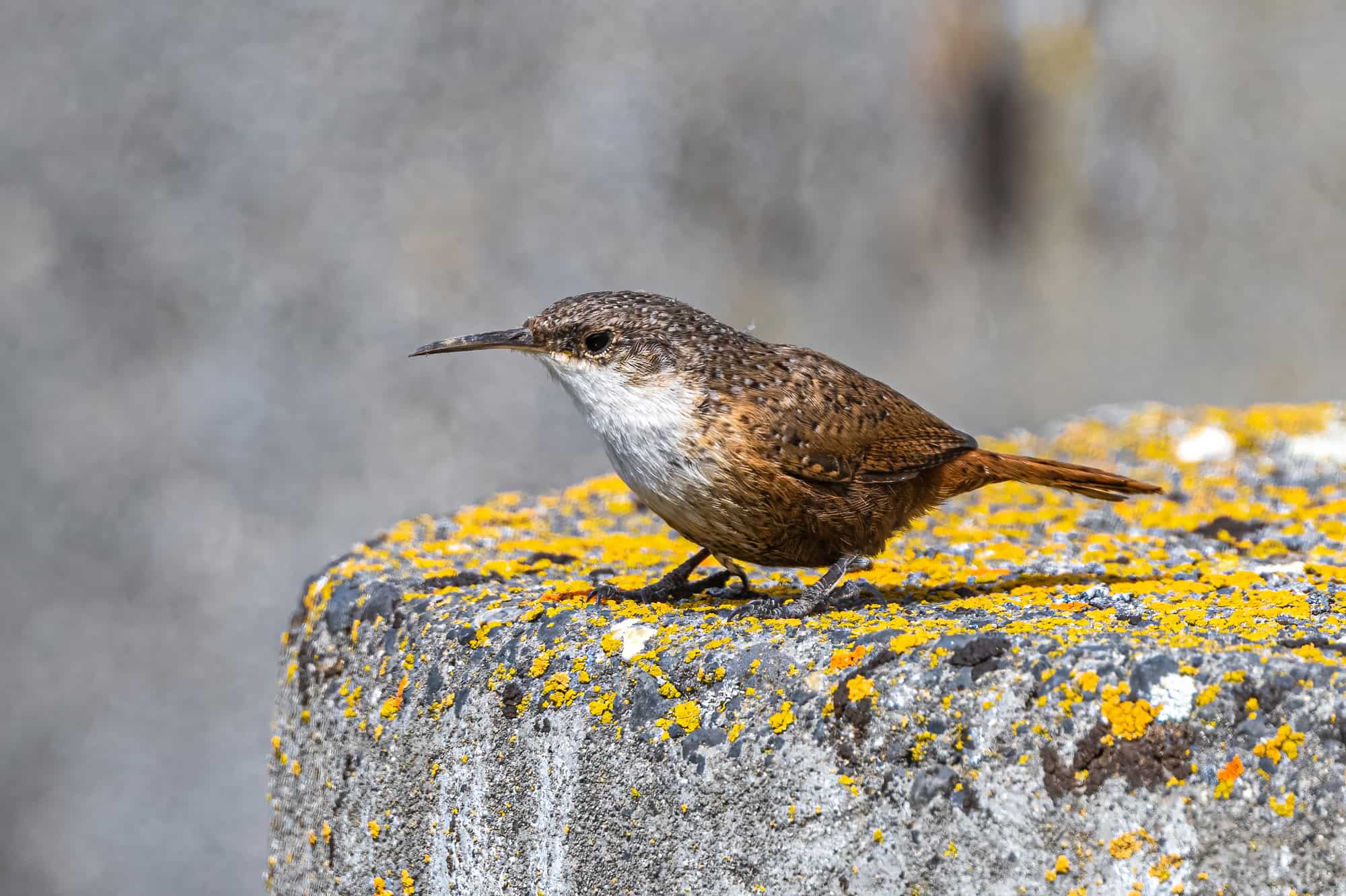While many people think of New Mexico as a parched, deserted state, it actually has one of the most diverse landscapes anywhere in the USA. While cactus-filled deserts fill auburn landscapes in some parts, other areas are blessed with verdant grasslands, vast spruce, fir, and aspen forests, and snowy mountaintops.
This rich diversity of habitats and climates makes New Mexico a haven for birdlife. There’s been a whopping 549 bird species recorded in the ‘Land of Enchantment’ – making it the fourth most diverse state for birdlife in the entire union.
Of the 11 wren species in North America, 9 of them can be spotted in New Mexico. The state’s position on the map means that both westerly and easterly species converge here, although many are only found in certain regions.
Wrens are some of the most enchanting songbirds and can be encouraged to visit backyards by leaving overgrown corners and brush piles from where they can forage for insects. A few species will even use nest boxes and visit bird feeders.
If you’re a real bird whiz, you might be able to guess most of the wrens in New Mexico already. See how many you can get before scrolling down!
Wrens in New Mexico, Starting With the Most Common
Bewick’s Wren

- Scientific Name: Thryomanes bewickii
- Length: 5.1 in (13 cm)
- Weight: 0.3-0.4 oz (8-12 g)
- Wingspan: 7 in (17.8cm)
According to birdwatcher’s reports submitted to ebird.org, Bewick’s wren remains the most commonly spotted wren in New Mexico. They show up on more than 12% of reports in summer, and around 9% in winter.
This is reassuring because Bewick’s wren populations have declined dramatically over the past century in the easterly states. Scientists are still debating the cause of their demise, but it seems that the drier conditions of the West provide an important refuge for this once-widespread species.
Bewick’s wrens are pretty, elegant little birds with long white eyebrows, a pale gray belly, and brown backs. Their beautiful long tail is frequently flicked and fanned, revealing black barring and white corners.
Bewick’s wren’s favorite habitat is dense brushy areas but they may visit backyards, too. They’ll sometimes nest in a suitable nestbox, but rarely visit backyard feeders.
Rock Wren

- Scientific Name: Salpinctes obsoletus
- Length: 4.9-5.9 in (12.5-15 cm)
- Weight: 0.5-0.6 oz (15-18 g)
- Wingspan: 8.7-9.4 in (22-24 cm)
Rock wrens only show up in around 6% of birdwatchers’ reports during the summer season in New Mexico, but also retain a small presence here during the winter.
Rock wrens are much larger than Bewick’s wrens – in fact, their 9-inch wingspan is the second broadest of any wren in North America. Their light grayish color, long bill, and long legs make them fairly easy to recognize.
Appropriately named, rock wrens are mostly seen around rocky cliffs and boulders. They use their long bills to probe cavities for insects, and can often be seen bouncing up and down, singing their buzzy song while perched on top of a rock.
A remarkable facet of the rock wren is the ‘front porch’ of stones that they build in front of their nest site. Scientists have concluded that this method may help to prevent nests from getting flooded, or maybe the rock wrens simply love to make their nest site beautiful.
House Wren

- Scientific Name: Troglodytes aedon
- Length: 4.3-5.1 in (11-13 cm)
- Weight: 0.3-0.4 oz (10-12 g)
- Wingspan: 5.9 in (15 cm)
During the warmer months, house wrens are a fairly common sight in New Mexico when they come to breed here. In winter, however, the vast majority of wrens fly to Central America, leaving only a few individuals overwintering the southern fringes of the state.
House wrens are plucky little birds who love to bounce and bob as they belt out their boisterous songs and scolding calls. You can persuade them to make their home in your backyard by offering them a suitable nest box such as a gourd bird house.
Watching house wrens raise a family of birds is a real treat. These tiny birds are not lacking in courage, and will sometimes harangue cats or chase away much larger birds from their nest sites!
Did you know that the house wren is the most widespread bird in all of the Americas? They can be found almost everywhere at some time of the year from Central Canada to the tip of Patagonia!
Canyon Wren

- Scientific Name: Catherpes mexicanus
- Length: 4.5-6.1 in (11.4-15.4 cm)
- Weight: 0.3-0.7 oz (9.9-18.3 g)
- Wingspan: 7.1-7.9 in (18-20 cm)
Canyon wrens are gorgeous, unusual-looking wrens of the western states. Their extremely long bill, white throat, and rufous plumage make them unmistakable for any other wren.
The typical habitat for Canyon wrens is indeed canyons and steep cliff faces. Their lush, cascading song echoing over the rocks can bring a palpable sense of sweetness and respite to the stark, barren landscapes.
Canyon wrens use their long bill to search for insects and spiders, and will frequently raid spider webs and wasp nests for their sustenance! Curiously, this wren has never been seen drinking water – perhaps they get enough from the juicy insects they catch!
Canyon wrens can be found in their favorite landscapes throughout New Mexico, except in the lower-lying regions near the eastern border with Texas.
Cactus Wren

- Scientific Name: Campylorhynchus brunneicapillus
- Length: 7.1-8.7 in (18-22 cm)
- Weight: 1.1-1.7 oz (32-47 g)
- Wingspan: 11 in (28cm)
Cactus wrens are the largest wren in the USA and are only found in six of the country’s southwestern states. Their broad 11-inch wingspan makes them more akin to the thrasher family than to other wrens!
With a speckled breast, long bill, and long white eyebrows, the cactus wren is fairly easy to identify. They never cock their tail like other wrens do, perhaps they have less need to feign a fearsome appearance!
Cactus wrens show up equally often in summer and winter on birdwatchers’ reports in New Mexico. They’re normally seen among low cactuses, and, according to The Sibley Guide to Birds, build their nests in a fork of the cactus.
- Sibley Guide To Birds, 2nd Ed
- Sibley, David Allen (Author)
- English (Publication Language)
Last update on 2024-04-27 / Affiliate links / Images from Amazon Product Advertising API
Listen out for the cactus wren’s bizarre, repetitive laughing song that’s quite unlike any other wren. Sadly their numbers are decreasing due to habitat loss and wildfires.
ABC’s birdscape program aims to protect and restore their native habitats.
Marsh Wren

- Scientific Name: Cistothorus palustris
- Length: 3.9-5.5 in (10-14 cm)
- Weight: 0.3-0.5 oz (9-14 g)
- Wingspan: 5.9 in (15 cm)
While New Mexico doesn’t boast as much marshland as other states, there are still some wetlands to provide a refuge for a small number of marsh wrens during the winter season.
In the spring, most marsh wrens fly north to breed, except for a small population that nests in the mountainous border with Colorado.
The marsh wren is often described as ‘pugnacious’ – perhaps a good word to describe the character of this boisterous little wren. Marsh wrens are incredibly territorial, and are even known to destroy their rival’s nests!
Be sure to take a good pair of binoculars with you and learn the marsh wren’s song if you wish to observe the marsh wren, a bird that rarely leaves the cover of tall cattails and reeds among standing water.
Winter Wren

- Scientific Name: Troglodytes hiemalis
- Length: 3.1-4.7 in (8-12 cm)
- Weight: 0.3-0.4 oz (8-12 g)
- Wingspan: 4.7-6.3 in (12-16 cm)
The winter wren is much more common in America’s eastern states, but can occasionally be spotted in Eastern New Mexico during the colder months. Look out for them in dense, shady habitats, especially near water.
Winter wrens are tiny, beautiful birds, sometimes measuring no more than the length of a Post-it note! They share the honor of being the smallest wren in America with their cousin the Pacific wren.
But what they lack in size, winter wrens make up for in gusto! They have one of the most forceful and elaborate repertoire of songs of any songbird in North America – listen out for a series of high-pitched, musical warbles and tinkling trills.
Carolina Wren

- Scientific Name: Thryothorus ludovicianus
- Length: 4.7-5.5 in (12-14 cm)
- Weight: 0.6-0.8 oz (18-22 g)
- Wingspan: 9 in (23 cm)
Carolina wrens are one of the most common backyard birds of the eastern states but are rarely found west of Texas. It’s extremely uncommon to see them in New Mexico where they only make it onto around 1 in 1000 bird watchers’ reports.
If you’re not familiar with Carolina wrens, they are one of the larger wren species, with a plumper shape than many of their cousins. They have a lovely buffy-orange underside, long white eyebrows, and a white chin.
During courtship, the male offers a rolling chant of tuneful phrases, to which the female will sometimes respond with buzzing chatter.
Like most wrens, Carolina wrens feed primarily on insects, but scientific studies have revealed that they’ll also occasionally hunt small reptiles like ground skinks!
As the climate changes, Carolina wrens may venture further west, so keep your eyes out for them in the Eastern lowlands of New Mexico.
Pacific Wren

- Scientific Name: Troglodytes pacificus
- Length: 3.1-4.7 in (8-12 cm)
- Weight: 0.3-0.4 oz (8-12 g)
- Wingspan: 4.7-6.3 in (12-16 cm)
The Pacific wren is very seldom reported in New Mexico, but that could be partly because they’re mistaken for their close cousins the winter wren.
These two species are so alike that they were considered to be the same species until 2008! The main difference is in their distinctive song – the Pacific wren’s being slightly faster, more mechanical, and less musical than the winter wren’s.
Like winter wrens, Pacific wrens prefer damp, shady habitats. While they’re usually quite solitary, they’ve been known to congregate in large numbers in birdhouses during the winter months!
According to Sibley’s Guide to Birds, Pacific wrens occasionally venture into the western parts of New Mexico, while winter wrens only travel to the east. Judging by this, if you see a tiny brown wren west of Albuquerque, it’s more likely to be a Pacific wren.
- Sibley Guide To Birds, 2nd Ed
- Sibley, David Allen (Author)
- English (Publication Language)
Last update on 2024-04-27 / Affiliate links / Images from Amazon Product Advertising API
Conclusion
The diverse local climates and landscapes in New Mexico make it a great place to see wrens. While no one species is especially common here, the diversity of wrens in New Mexico is remarkable.
Whether you’re a New Mexico resident or just passing through the state to see some nature, there’s a lot of bird life to enjoy here! So that you know which birds to look out for, we’ve compiled a list of 25 of the most magnificent birds in New Mexico, here.

